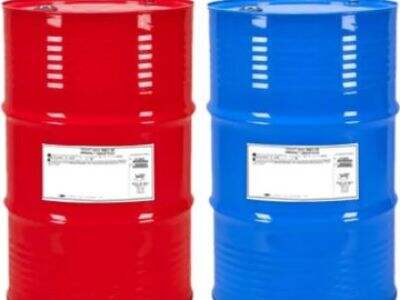Mădurele și elastice din poliuretan sunt utilizate în diverse părți ale vieții noastre. Acestea se pot găsi în mobilier, de exemplu, într-un canapea sau o scaun, și chiar în solele șosetelor. Acest fel de lucruri ne înconjoară pe tot, dar v-ați oprit vreodată și v-ați gândit cum ne afectează natura? Deci, în acest articol, vom afla mai multe despre mădurele din poliuretan, ce impact au asupra naturii și al lumii înconjurătoare?
Ce sunt mădurele din poliuretan?
Mădurele din poliuretan sunt un produs secundar al reacției dintre câteva chimicale care produc un material moale. Poliolele și izocianatele sunt cele două ingrediente principale, și de fiecare dată când aceste două chimicale interacționează, ne oferă mădurea elastică pe care o găsim peste tot. Dar desigur, în această reacție, unele dintre aceste chimicale pot fi periculoase. Ele pot fi nocive atât pentru oameni, cât și pentru planeta. Pot cauza și poluarea aerului.
Deșeurile din producție
Deșeurile din foam polyuretan necesită sute de ani pentru a se descompune în depozitele de gunoi. De fiecare dată când producem polyuretane sub formă de foam, generăm o cantitate mare de deșeuri din materiale neutilizate. Excesul de deșeuri este de obicei mutat în depozitele de gunoi unde se acumulează. Acestea pot dura zeci sau chiar sute de ani în unele cazuri! În timpul acesta, deșeurile pot elibera chimicale periculoase în sol și apă, care pot fi letale pentru plante, animale, și chiar oameni.
Pericoluri Ascunse ale Foam-urilor de Polyuretan
Foam-urile de polyuretan pot fi, de asemenea, periculoase după ce au fost fabricate. În unele cazuri, foam-ul poate începe să se deterioreze, și atunci când aceasta se întâmplă, eliberează substanțe periculoase în aer. Aceste chimicale sunt denumite ftalate și formaldehid; nu vrem aceste substanțe în plămânii noștri. Ca urmare, efectele pe care foam-ul le-ar putea avea asupra corpurilor noastre pot apărea mult după ce am folosit foam-ul.
De asemenea, foameta poliuretană nu este biodegradabilă; adică, aceasta nu se descompune ca mâncarea sau hârtia. Poate să dureze în mediu câteva sute de ani. Acest lucru reprezintă o problemă majoră, deoarece permite eliberarea de substanțe chimice nocive în aer pe termen lung, după ce funcția foamei a fost îndeplinită.
Cum produsele din foam afectează mediul
Există multe feluri în care foamele poliuretane pot fi periculoase pentru mediul înconjurător. Să ne amintim câteva: dacă sunt eliminare necorespunzător, acestea ar putea să scurgă substanțe chimice periculoase în sol și surse de apă, provocându-le poluarea. Plantele și animalele din vecinătate sunt pusă în pericol. Foameta se degradează și poate chiar emite toxine în aer, ceea ce-l face astfel periculos de respirat.
În producerea foametei poliuretane se consumă multă energie și resurse naturale. Acest proces poate emite, de asemenea, gaze cu efect de seră, contribuind la schimbările climatice. Schimbările climatice pot aduce fenomene meteorologice extreme devastatoare și creșterea nivelului mării, printre altele.
Eficiente asupra vieții silvestre
Poate fi evitat un asemenea daunător efect asupra naturii și vieții silvestre înlocuind foamele de poliuretan? Substanțele chimice periculoase eliberate pot ucide animale și plante prin distrugerea habitatului lor și prin dificultarea supraviețuirii lor. De exemplu, când peștii rămân în apă poluată, ei vor deveni bolnavi sau vor muri, iar sistemul ecologic va fi perturbat. În plus, deșeurile rezultate din producția de foame de poliuretan vor duce la o scădere a biodiversității, ceea ce înseamnă mai puține specii de plante și animale în mediul nostru.
Putem găsi o soluție mai bună
Putem reduce presiunea asupra mediului nostru prin găsirea unor alternative mai durabile pentru una dintre materialele cele mai consumate: foama de poliuretan.
Acest lucru înseamnă că trebuie să ne străduim să producem mai puține foame și să ne orientăm spre o oportunitate de reciclare a foamei, în loc să o aruncăm ca deșeu. Alții acționează rapid pentru a introduce noi produse care au un impact asupra mediului nostru.
SANYING face parte pentru planeta prin urmărirea continuă a noilor materiale și idei care ar putea îmbunătăți produsele noastre pentru natură. Astfel, înlocuind aceste articole cu altele prietenoase mediului, putem crea produse funcționale care să demonstreze că atmosfera noastră este sigură pentru noi.
Concluzie
În cele din urmă, deși foameta poliuretan pare inofensivă și benefică, impactul ei asupra mediului este extrem. Acești impacturi trebuie să ne fie cunoscuți astfel încât să putem gândi cum să reducem amprenta noastră și să păstrăm ecosistemele noastre. Să facem un viitor mai sănătos și mai durabil pentru fiecare dintre noi!














































